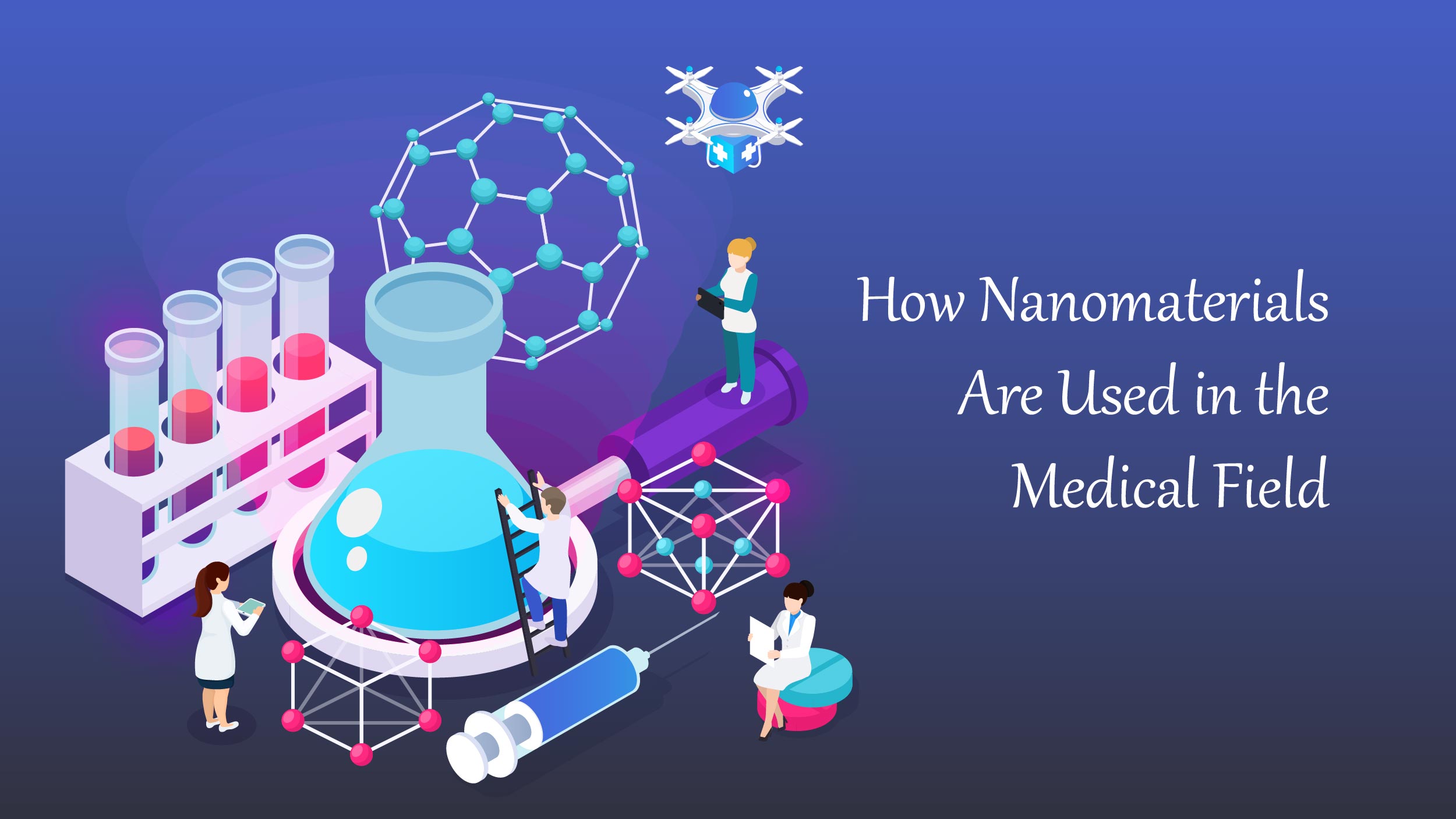In a world grappling with the limitations of traditional materials, the emergence of nanomaterials has sparked a new wave of hope and innovation. The need for materials with enhanced properties, exceptional strength, and unparalleled versatility across various industries has been a persistent challenge. This blog aims to explore the transformative potential of nanomaterials, shedding light on their myriad applications, benefits, and recent advancements in the medical field.
What are Nanomaterials?
Nanomaterials (nanoparticles) are materials engineered at the nanoscale, typically ranging from 1 to 100 nanometers. This unique scale endows them with exceptional properties such as high strength, increased surface area, and reactivity, among others. These can be categorized into various types, including nanoparticles, nanofibers, nanotubes, and quantum dots. These materials have gained significant attention due to their potential to revolutionize diverse industries, from electronics and energy to healthcare and environmental remediation.
Benefits of Nanomaterials
The benefits of utilizing nanomaterials are extensive and diverse, spanning various industries and applications. Nanotechnology holds the promise of transforming electronic products, procedures, and applications, particularly in fields such as electronics, medicine, energy, and materials science. Some of the key advantages of nanoparticles include:
- Revolutionizing Electronic Products: Nanotechnology presents opportunities to revolutionize electronic products, procedures, and applications. Advancements in areas like nano transistors, nano diodes, OLEDs, plasma displays, and quantum computers are just a glimpse of the potential impact.
- Enhanced Properties: Nanoscale materials exhibit unique properties in electronics, optics, and mechanics. Their behavior is dictated by surface area rather than particle composition, leading to enhanced properties and performance.
- Energy Efficiency: In the energy sector, nanoparticles can improve existing energy generation methods, such as solar panels, making them more efficient and cost-effective. They also enable novel approaches to energy harvesting and storage, promoting better energy efficiency and sustainability.
- Advancements in Medicine: Nanoparticles hold significant promise in medicine, particularly in the development of smart drugs for faster and side-effect-free treatment. They also facilitate early diagnosis and treatment of diseases like neurodegenerative disorders and cancer.
- Environmental Applications: These offer environmentally friendly solutions, such as air and wastewater purification, using techniques like ion-based air purification and nanobubble wastewater treatment. Nanocatalysts contribute to more efficient and less polluting chemical reactions, promoting environmental sustainability.
- Manufacturing Advantages: Nanotechnology introduces new materials like nanotubes, nanoparticles, and aerogels, paving the way for innovative manufacturing techniques and superior products. This leads to advancements in manufacturing processes and product quality.
- Improved Performance: They provide increased strength, durability, enhanced electrical conductivity, and catalytic activity. They find applications in targeted drug delivery, more efficient solar cells, and batteries, among other areas, enhancing overall performance across various sectors.
Also Read : How to Streamline Your Logistics Operations for Maximum Efficiency?
Classification of Nanomaterials

Here’s an overview of the primary classifications of nanoparticles, synthesized from insights gathered from multiple sources:
Material-Based Classification
- Carbon-Based: Renowned for their versatility and intensive research, carbon-based nanoparticles stand as a distinct class. Notable examples include fullerenes and graphene, pivotal in advancing nanotechnology.
- Metal-Based: Encompassing a spectrum of metal-derived materials like quantum dots, nanogold, nanosilver, and metal oxides such as titanium dioxide. These find applications across electronics, coatings, and biomedical sectors.
- Other Material-Based Categories: These are further categorized based on their dimensions and structure, leading to distinctions like zero-dimensional, one-dimensional, and nanostructured materials, each boasting unique properties compared to their bulk counterparts.
Morphology and Structure-Based Classification
- Nanoparticles are also classified based on their morphology and structure, distinguishing between consolidated materials and nanodispersions. Consolidated nanoparticles are subdivided into one-dimensional nanodispersive systems like nanopowders and nanoparticles.
Clays serve as examples of naturally occurring inorganic nanoparticles, forming through crystal growth under varying chemical conditions on the earth’s crust.
Structural Dimensionality-Based Classification
Nanomaterials are further categorized based on their structural dimensionality, leading to the segmentation of zero-dimensional and one-dimensional nanoparticles. Spherical materials represent zero-dimensional structures, while one-dimensional counterparts possess two dimensions at the nanoscale. These classifications, rooted in the dimensions of nanoparticles, profoundly influence their properties and applications.
How Nanomaterials Are Used in the Medical Field

In the medical field, nanoparticles have found diverse applications and recent innovations, including:
- Diagnostic tools and imaging nanoparticles are at the forefront of developing advanced diagnostic tools and imaging techniques. Researchers are exploring their potential for targeted imaging and early disease detection, such as identifying cancer cells in the bloodstream. For instance, antibodies attached to carbon nanotubes in chips enable precise cancer detection.
- Drug delivery systems nanoparticles are pivotal in crafting targeted drug delivery systems. Their unique ability to ferry active compounds, coupled with their expansive surface area, makes them adept at anchoring and delivering drugs to specific cells or tissues. This targeted approach minimizes systemic side effects while maximizing treatment efficacy.
- Tissue engineering and regenerative medicine innovations in nanoparticles have significantly influenced tissue engineering and regenerative medicine, opening new avenues for personalized treatments and organ regeneration. These serve as scaffolds in tissue engineering, offering innovative solutions for tissue repair and regeneration. They hold promise in addressing critical medical needs and advancing patient care.
Final Takeaway
Nanomaterials stand at the forefront of a transformative era, offering unprecedented opportunities for innovation and progress across industries. Their remarkable properties, coupled with continuous advancements in fabrication and characterization techniques, position them as catalysts for addressing complex challenges and driving breakthroughs in diverse fields. As research and development in nanoparticles continue to accelerate, their potential to redefine the way we approach technology, healthcare, and sustainability is increasingly evident.




